Chippewa National Forest
- February 13, 2024
- 0 comment
Explore Chippewa National Forest’s vast wilderness, rich in wildlife & cultural history. Perfect for hiking, camping & nature lovers. Beyond the bustling cities of Minnesota lies a haven of towering pines, pristine lakes, and vibrant history – the Chippewa National Forest. Breathe in the crisp air, lace up your boots, and embark on an unforgettable adventure.
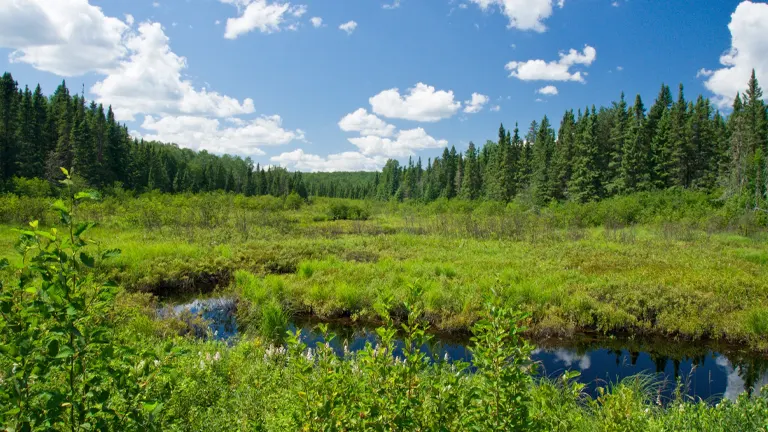
Whether you seek the thrill of winter sports, the serenity of fishing, or a glimpse into the rich heritage of the Ojibwe people, this 666,000-acre wonderland has something for everyone. Let’s delve deeper and explore the hidden gems waiting to be discovered…
Characterizing Features Chippewa National Forest
- Lush Forests: Towering pines, vibrant maples, and whispering poplars paint the landscape, providing habitat for diverse wildlife and offering endless trails for hikers, bikers, and nature enthusiasts.
- Sparkling Lakes: Over 1,200 lakes and countless streams dot the forest, each offering a haven for anglers, boaters, and kayakers. The pristine waters reflect the sky, creating breathtaking vistas and inviting moments of tranquility.
- Rich Ojibwe History: For centuries, the Ojibwe people have called this land home, leaving behind a rich cultural tapestry evident in historical sites, interpretive trails, and vibrant storytelling traditions.
History of Chippewa National Forest
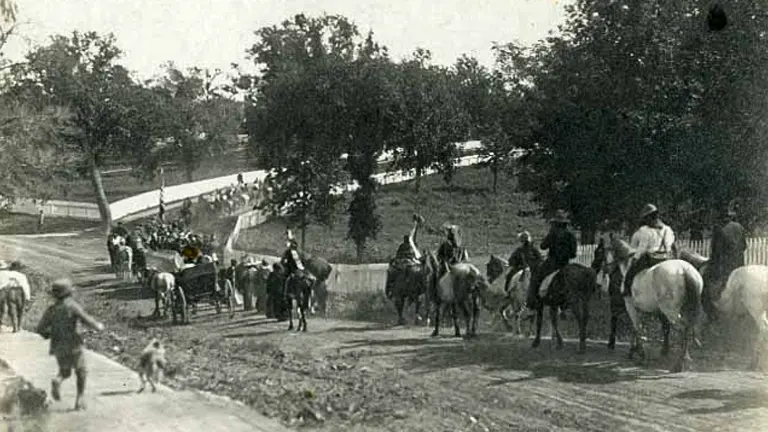
Established in 1908 as the first national forest east of the Mississippi, the Chippewa National Forest’s history is intricately woven with human interaction. From early Ojibwe settlements to logging operations and Civilian Conservation Corps projects, the land bears witness to a dynamic past. Today, the forest strives to balance conservation with responsible recreation, offering a glimpse into its legacy while ensuring its future.
Unique Ecosystem of Chippewa National Forest
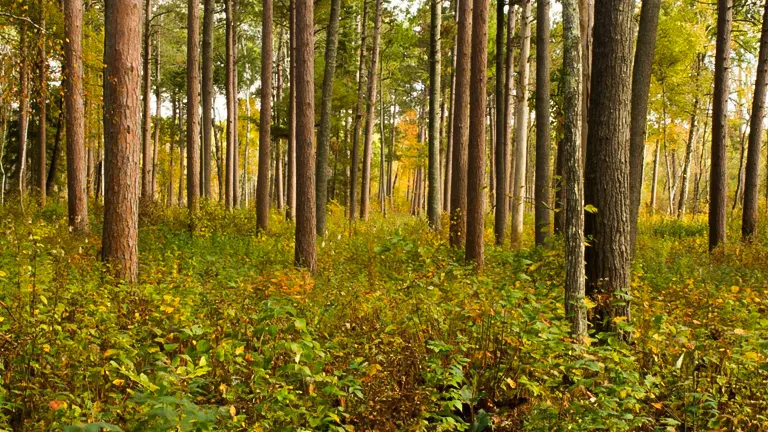
The Chippewa National Forest boasts a diverse ecosystem, transitioning from boreal forests in the north to hardwood forests in the south. This intricate tapestry provides habitat for a variety of animal species, including majestic bald eagles (Haliaeetus leucocephalus), playful otters (Lontra canadensis), and elusive wolves (Canis lupus). The forest also harbors unique wetlands, home to amphibians like the spotted salamander (Ambystoma maculatum) and rare plants like the bogbean ( Menyanthes trifoliata).
Location of Chippewa National Forest
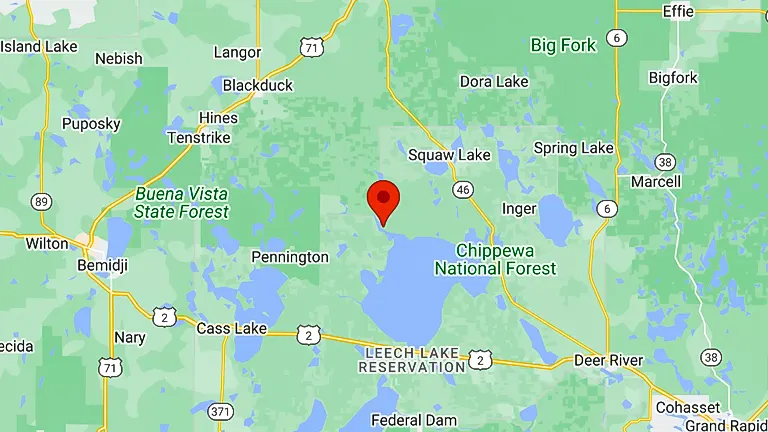
Easily accessible from major cities like Minneapolis and Duluth, the Chippewa National Forest stretches across Itasca, Cass, and Beltrami counties in north-central Minnesota. Whether you seek a quick escape or a deep immersion into nature, the diverse landscapes and convenient location make it the perfect getaway.
Here are some specific guides on how to reach Chippewa National Forest:
By Car (From Minneapolis):
- Take I-94 West towards St. Cloud.
- Merge onto MN-371 North via the exit toward Brainerd.
- Continue on MN-371 North, transitioning onto MN-200 East/US-2 East near Walker, leading directly into the heart of Chippewa National Forest.
By Car (From Duluth):
- Follow US-2 West towards Grand Rapids.
- Stay on US-2 West, which skirts the northern boundary of the forest, providing access to various entry points and attractions within the forest.
By Air:
- The closest major airport is Duluth International Airport (DLH) for those coming from further away. Car rental services are available at the airport to complete the approximately 2-hour drive to the forest.
- For closer air travel options, consider using the Grand Rapids/Itasca County Airport (GPZ), which offers limited commercial service and is much closer to the forest. Car rentals are also available here.
By Public Transportation:
- While direct public transportation options to Chippewa National Forest are limited, visitors can take regional bus services to nearby cities such as Bemidji, Grand Rapids, or Brainerd. From these locations, car rental or local shuttle services may be used to reach the forest.
By Bike:
- For the adventurous, cycling to the forest is an option during the warmer months. Utilize state trails like the Paul Bunyan State Trail, which approaches the western edge of the forest near Walker. Be prepared for long distances and ensure your route is safe for biking.
Trail Systems:
- Several long-distance hiking trails and state trails intersect or approach the forest, such as the Heartland Trail. Hikers and bikers can use these trails to enter the forest from various points, offering a unique way to connect with the landscape.
GPS Navigation:
- For those using GPS devices or smartphone navigation apps, entering the specific area of interest within Chippewa National Forest (such as a campground, lake, or trailhead) can provide accurate directions from your starting location.
Local Directions:
- Once in the vicinity, look for brown informational signs indicating Chippewa National Forest access points, campgrounds, and attractions. Local towns also often have maps and guides available for visitors.
Conservation and Recreation in Chippewa National Forest
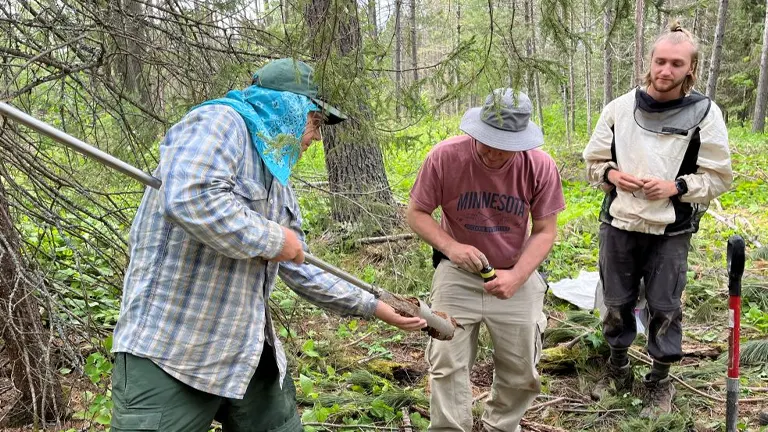
Striking a harmonious balance between preserving the natural heritage and offering recreational opportunities is paramount at the Chippewa National Forest. Sustainable forestry practices ensure the forest’s health, while a network of trails, campgrounds, and visitor centers welcomes adventurers of all levels. Responsible recreation goes hand-in-hand with conservation, allowing visitors to experience the wonders of the forest while ensuring its sustainability for future generations.
Diverse Vegetation and Plant Species in Chippewa National Forest
- Towering Conifers: Red pines (Pinus resinosa), jack pines (Pinus banksiana), and white spruce (Picea glauca) dominate the northern landscape, providing winter cover for wildlife and soaring high above the forest floor.
- Majestic Hardwoods: Sugar maples (Acer saccharum), basswood (Tilia americana), and red oaks (Quercus rubra) flourish in the southern regions, offering vibrant fall foliage and diverse habitats for birds and mammals.
- Unique Wetlands: Fragile bogs and marshes harbor sphagnum moss, carnivorous sundews (Drosera spp.), and white pines (Pinus strobus), creating vital ecosystems for amphibians and waterfowl.
- Wildflowers Abound: From delicate lady slippers (Cypripedium) to vibrant fireweed (Chamerion angustifolium), wildflowers paint the forest floor in spring and summer, attracting butterflies and pollinators.
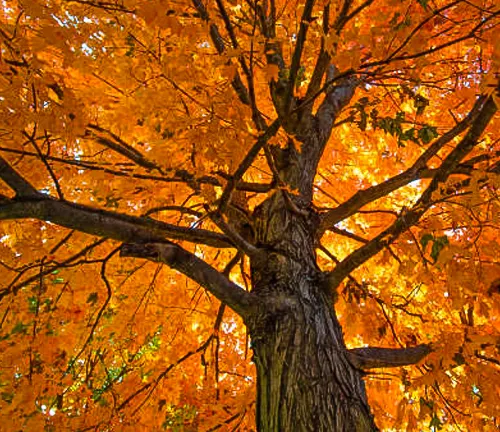
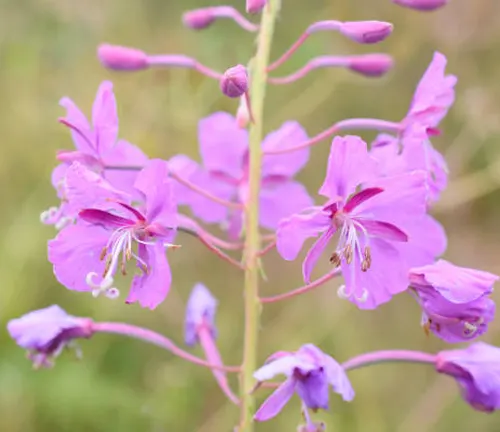
Fascinating Fauna in Chippewa National Forest
- Mammals: White-tailed deer (Odocoileus virginianus), black bears (Ursus americanus), moose (Alces alces), and playful red foxes (Vulpes vulpes) roam the forest, while elusive bobcats (Lynx rufus) and martens (Martes americana) add to the biodiversity.
- Birds: Soaring bald eagles, colorful warblers like the black-throated green warbler (Setophaga virens), and the iconic common loon (Gavia immer) fill the air with their songs, while owls like the great horned owl (Bubo virginianus) hunt under the cover of darkness.
- Aquatic Life: Walleye (Sander vitreus), bass (Micropterus spp.), and lake trout (Salvelinus namaycush) thrive in the clear waters, while otters and beavers add to the aquatic diversity.
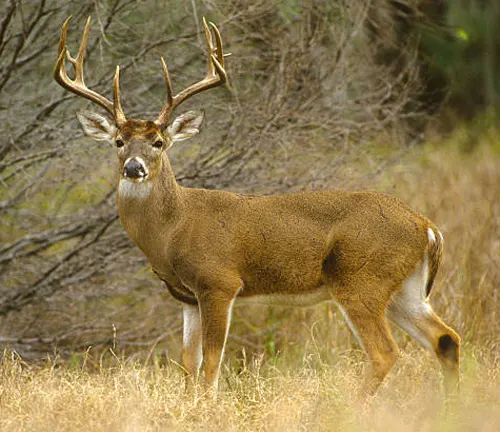
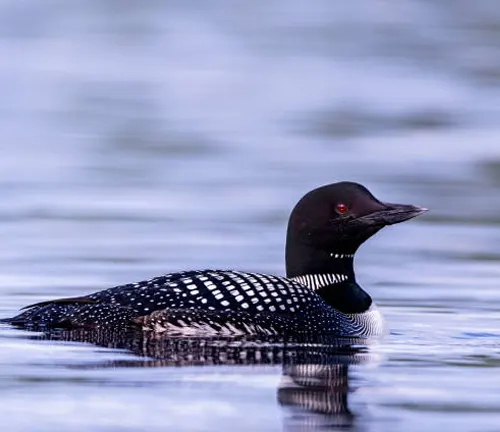
Unforgettable Attractions in Chippewa National Forest
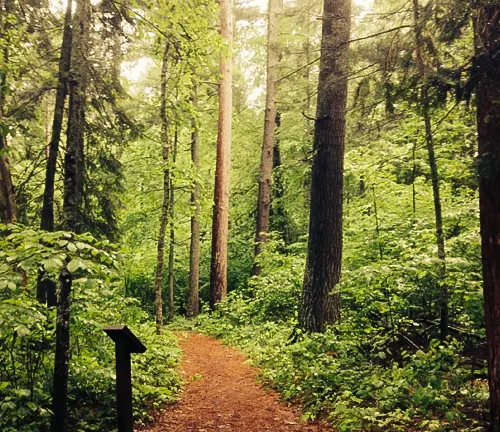
Lost Forty: The Lost Forty is a rare natural gem, an untouched piece of ancient forest that escaped logging due to a surveying error over a century ago. Today, it stands as a living museum, showcasing towering red and white pines that are over 350 years old. Walking the one-mile nature trail takes visitors back in time, offering a glimpse of what Minnesota’s vast forests once looked like. This serene and majestic place is not just a haven for nature lovers but also a poignant reminder of the importance of conservation.
Cut Foot Sioux Ranger Station: The Cut Foot Sioux Ranger Station is a testament to the forest’s rich history and its role in the early conservation efforts in the United States. Established in the early 1900s, this historic ranger station offers visitors insights into the life and work of the forest rangers who have protected these lands for generations. The station’s charming architecture and the surrounding old-growth forests make it a picturesque spot for learning about the national forest system’s origins.

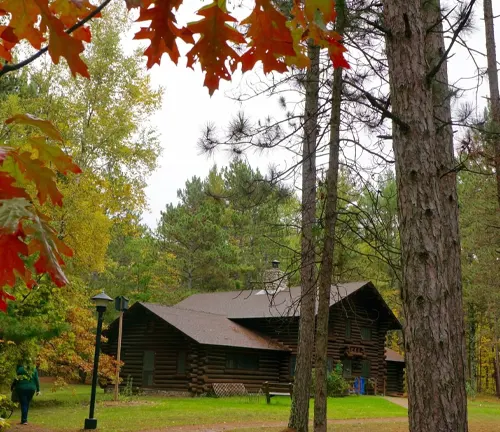
Norway Beach Recreation Area: Located along the shores of Cass Lake, the Norway Beach Recreation Area is the perfect destination for families and outdoor enthusiasts. With its stunning sandy beaches, crystal-clear waters, and towering pines, it’s an ideal spot for swimming, picnicking, and hiking. The area features several well-maintained trails, campgrounds, and picnic spots, making it a comfortable and accessible way to immerse yourself in the natural beauty of Chippewa National Forest.
Migizi Trail: The Migizi Trail offers a fantastic cycling or walking experience as it winds around the picturesque Pike Bay. This paved trail spans approximately 19 miles, providing a safe and scenic route through dense forests, wetlands, and along the lake’s edge. It’s a great way to explore the forest’s diverse ecosystems at your own pace, with plenty of opportunities to spot wildlife, enjoy the tranquility of the forest, and take in the stunning views.
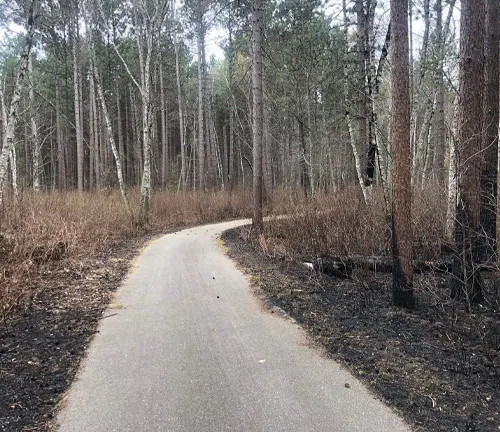
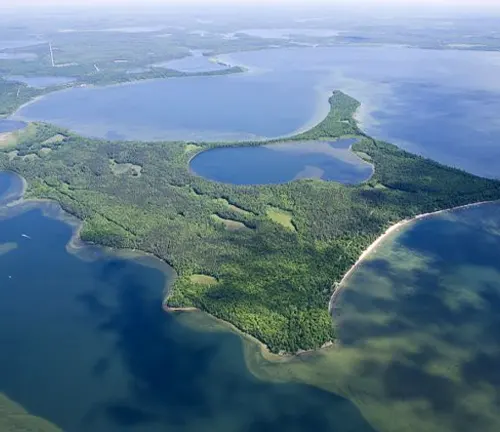
Star Island and Lake Windigo: Star Island is one of Chippewa National Forest’s most unique features, housing Lake Windigo, a lake within an island within a lake (Cass Lake). This peculiar and fascinating geographical feature is a must-visit for its sheer novelty and beauty. Visitors can hike around the island, explore its secluded spots, and enjoy panoramic views of Cass Lake. It’s also a popular spot for camping and fishing, offering a secluded escape within the forest’s vast expanse.
Chippewa National Forest Scenic Byway: For those who prefer to take in the sights from the comfort of their car, the Chippewa National Forest Scenic Byway is a must-drive. This route meanders through the heart of the forest, offering breathtaking views of the landscape, including dense woodlands, sparkling lakes, and vibrant wetlands. Along the way, there are numerous spots to pull over, explore a trail, picnic, or simply enjoy the serene beauty of the forest. It’s a wonderful way to experience the diversity of Chippewa National Forest at your own pace.
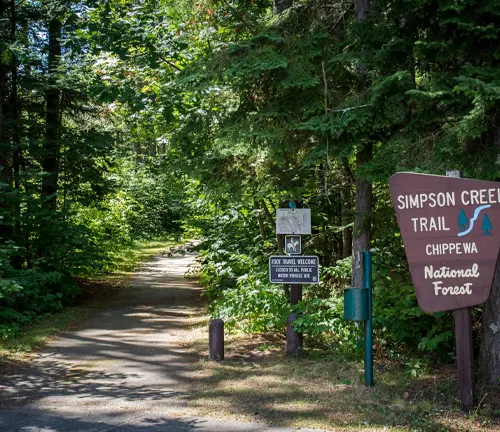
Recreational Activities in Chippewa National Forest
- Hiking: The forest features an extensive network of trails, varying in length and difficulty, catering to hikers of all abilities. These trails traverse through diverse habitats, offering hikers educational insights into the area’s natural history and ecology. For example, the Lost Forty Trail provides a unique opportunity to learn about old-growth forest ecosystems and the importance of conservation efforts in preserving these rare natural relics.
- Boating and Canoeing: With its numerous lakes and rivers, Chippewa National Forest is a prime destination for water-based recreation. Boating and canoeing here not only offer relaxation and scenic beauty but also serve as educational experiences. Paddlers can learn about aquatic ecosystems, the significance of water quality, and the role of clean waterways in supporting both human and wildlife communities.
- Fishing: The lakes and streams within the forest are home to a variety of fish species, making it a popular spot for anglers. Fishing in Chippewa National Forest can be an educational activity, teaching participants about different fish species, aquatic habitats, and the principles of sustainable fishing practices to ensure the health and longevity of these aquatic resources.
- Bird Watching: Chippewa National Forest is renowned for its bird population, including one of the largest concentrations of bald eagles in the lower 48 states. Bird watching here educates visitors about avian species, their behaviors, and habitats. It’s an opportunity to learn about the importance of habitat conservation and the roles different bird species play in the ecosystem.
- Camping: Camping in the forest allows visitors to immerse themselves in nature and learn firsthand about the outdoors. It’s an educational experience in outdoor living, teaching campers about minimal impact camping, survival skills, and the importance of preserving natural landscapes for future generations.
- Cross-Country Skiing and Snowshoeing: During the winter months, the forest transforms into a snowy wonderland, offering trails for cross-country skiing and snowshoeing. These activities provide a unique perspective on the forest’s winter ecology, educating participants about how plants and animals adapt to the cold and snow.
- Wildlife Observation: The diverse habitats within Chippewa National Forest support a wide array of wildlife. Engaging in wildlife observation is not only a chance to see these animals in their natural surroundings but also a learning experience about their behaviors, the food web, and the importance of conservation efforts to protect these species and their habitats.
- Cultural Heritage Exploration: The forest is rich in cultural history, with numerous sites that offer insights into the lives of the indigenous people and early settlers of the region. Exploring these sites educates visitors about the area’s human history, cultural traditions, and the interaction between people and the natural environment over time.

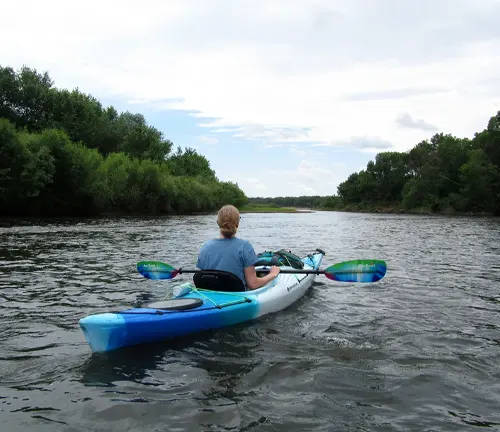
Diverse Facilities and Amenities in Chippewa National Forest
- Campgrounds: The forest boasts a range of campgrounds, from primitive backcountry sites to developed areas with modern amenities. These facilities offer visitors a direct experience of living in nature, fostering a deeper understanding of outdoor ethics, minimal impact camping, and the importance of preserving natural habitats. Educational programs often held at campground amphitheaters provide insights into local wildlife, conservation efforts, and cultural history.
- Day-Use Areas: Day-use areas throughout Chippewa National Forest are equipped with picnic tables, grills, and access to hiking trails and waterways. These areas serve as ideal spots for family outings and educational group activities, offering a base to learn about the forest ecosystem, plant identification, and the cultural significance of the land. Interpretive signage and kiosks present in many of these areas enhance the educational value of visits.
- Visitor Centers: The forest’s visitor centers are hubs of educational resources, offering exhibits on the region’s ecology, wildlife, and history. Friendly staff and interactive displays provide valuable information on the forest’s management, conservation practices, and recreational opportunities. These centers often host workshops and educational programs designed to engage visitors of all ages in environmental stewardship and outdoor skills.
- Hiking Trails with Interpretive Signage: Many of the hiking trails in Chippewa National Forest feature interpretive signage that educates hikers about the surrounding flora, fauna, and geological features. These signs enrich the hiking experience by offering insights into the ecosystem, highlighting conservation issues, and explaining the historical use of the land by indigenous peoples and early settlers.
- Boat Launches and Fishing Piers: Accessible boat launches and fishing piers are strategically located across the forest’s lakes and rivers. These facilities not only provide recreational opportunities but also serve as platforms for learning about aquatic ecosystems, water safety, and the principles of catch-and-release fishing to ensure sustainable fish populations.
- Picnic Shelters: Picnic shelters in scenic locations offer groups and families spaces to gather and enjoy the outdoors. These shelters often become classrooms in the wild, where visitors can partake in educational talks or guided activities focusing on local wildlife, plant life, and conservation strategies.
- Wildlife Viewing Areas: Designated wildlife viewing areas are set up to maximize opportunities to observe animals in their natural habitats without disturbing them. These areas are educational assets, allowing visitors to learn about wildlife behavior, habitat requirements, and the importance of biodiversity through firsthand observation.
- Water Access Points: Strategically placed water access points encourage exploration of the forest’s aquatic environments via canoe, kayak, or boat. These access points facilitate educational experiences related to water ecology, the history of waterway travel in the region, and the role of clean waterways in supporting both human and ecological health.
Tips and Advice for Visiting Chippewa National Forest
- Plan Ahead and Prepare: Research the specific areas of the forest you plan to visit, including trails, campgrounds, and water access points. Understanding the amenities available, such as potable water and restroom facilities, will help you pack appropriately. This preparation aligns with the principles of Leave No Trace, emphasizing the importance of minimizing your impact on the environment.
- Respect Wildlife: The forest is home to a diverse range of wildlife, including species like the bald eagle and gray wolf. Maintaining a safe distance and not feeding wildlife are critical for their health and for your safety. This practice educates visitors on the importance of preserving natural behaviors and habitats for wildlife.
- Leave No Trace: Familiarize yourself with the Leave No Trace principles to ensure your activities do not harm the environment. This includes packing out all trash, staying on designated trails, and minimizing campfire impacts. These principles serve as an educational foundation for responsible recreation in natural settings.
- Check Local Conditions: Weather and forest conditions can change rapidly. Checking the local weather forecast and any alerts or advisories for the Chippewa National Forest can help you avoid hazardous conditions. This tip underscores the importance of adapting to environmental conditions to ensure safety and protect the forest ecosystem.
- Be Prepared for Bugs: Mosquitoes, ticks, and other insects are prevalent in many areas of the forest, especially during warmer months. Wearing long sleeves and pants, using insect repellent, and conducting regular tick checks can prevent bites and related illnesses. Understanding the role of insects in the ecosystem can also enhance your appreciation of biodiversity.
- Practice Water Safety: If boating, canoeing, or swimming, always wear a life jacket and be mindful of water conditions. Lakes and rivers can have sudden depth changes, strong currents, or cold temperatures. This advice is not only crucial for personal safety but also offers a lesson in respecting the power and unpredictability of natural water bodies.
- Respect Cultural Sites: Chippewa National Forest is rich in cultural history, including sites significant to Indigenous peoples and early settlers. Visiting these sites with respect and curiosity promotes an understanding of the area’s heritage and the value of preserving historical legacies.
- Engage with Educational Programs: Take advantage of ranger-led programs, interpretive walks, and visitor center exhibits to learn more about the forest’s ecology, history, and conservation efforts. These programs offer valuable insights into environmental stewardship and the interconnectedness of natural systems.
- Stay on Designated Trails: Sticking to marked trails helps protect fragile habitats and prevents erosion. This practice not only ensures your safety by reducing the risk of getting lost but also serves as a stewardship action to preserve the landscape for future visitors.
- Prepare for Limited Connectivity: Cellular service can be spotty or nonexistent in remote areas of the forest. Prepare by downloading maps and important information ahead of your visit. This disconnect from technology encourages a deeper engagement with the natural environment, promoting mindfulness and a greater appreciation for the wilderness.
Recommendation
Whether you’re an avid outdoorsman seeking adventure, a nature enthusiast yearning for tranquility, or a history buff curious about the past, the Chippewa National Forest offers an unforgettable experience. Come explore its vibrant tapestry of landscapes, immerse yourself in its rich heritage, and create memories that will last a lifetime.
Conclusion
The Chippewa National Forest stands as a testament to the harmonious coexistence of nature, history, and recreation. This haven in the heart of Minnesota beckons you to explore its trails, discover its secrets, and leave a footprint on your own storybook adventure. So, pack your bags, lace up your boots, and embark on a journey into the wild heart of the Chippewa National Forest.
FAQs
- What is the best time of year to visit Chippewa National Forest?
The forest is accessible year-round, but the best time to visit depends on your interests. Summer offers ideal conditions for hiking, fishing, and boating, with the added beauty of lush vegetation. Fall brings stunning foliage colors, cooler temperatures, and excellent bird-watching opportunities. Winter is perfect for snowmobiling, cross-country skiing, and ice fishing, offering a serene, snowy landscape. - Can I bring my dog to Chippewa National Forest?
Yes, dogs are welcome in Chippewa National Forest but must be kept on a leash no longer than six feet when in developed recreation areas and on trails. It’s essential to manage your pet responsibly, including cleaning up after them and ensuring they do not disturb wildlife or other visitors. - Are there any entry fees for Chippewa National Forest?
There are no entrance fees for the forest itself. However, some campgrounds and recreation areas may charge a use fee. It’s advisable to check the specific area’s website or contact the forest service for detailed information on fees. - Do I need a permit for camping or other activities in the forest?
Most day-use activities do not require a permit, but overnight camping in developed campgrounds may require a reservation or fee. Special activities like large group gatherings, commercial filming, or certain types of commercial guiding services may require a permit. Always check with the Forest Service for the most current regulations. - What kind of wildlife might I see in the forest?
The forest is home to a diverse array of wildlife, including bald eagles, black bears, wolves, deer, and many species of birds and fish. While sightings are more common in remote areas, always maintain a safe distance from animals and follow guidelines to avoid attracting wildlife to your campsite. - Are there facilities for people with disabilities?
Yes, Chippewa National Forest strives to be accessible to everyone. Many campgrounds, picnic areas, and trails are designed to accommodate visitors with disabilities. Specific facilities may vary, so it’s a good idea to contact the forest service for information on accessible amenities in the area you plan to visit. - What should I do if I encounter a bear?
While bear encounters are relatively rare, it’s important to be prepared. If you see a bear, do not approach it. Make yourself appear larger, speak calmly and firmly, back away slowly, and avoid turning your back or running. Store food and trash securely to avoid attracting bears to your campsite. - How can I help preserve the natural beauty of Chippewa National Forest during my visit?
Practicing Leave No Trace principles is the best way to minimize your impact and help preserve the forest for future generations. This includes packing out all trash, staying on designated trails, camping in designated areas, keeping wildlife wild by not feeding them, and respecting cultural and natural resources. Volunteering for conservation projects and donating to organizations that support the forest can also make a significant positive impact.
Chippewa National Forest awaits with its vast beauty and serene landscapes. A place where adventure and tranquility meet, it invites you to explore, relax, and connect with nature. Come experience the wonders of the forest and create lasting memories in this remarkable outdoor haven.



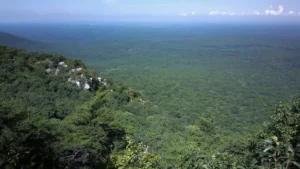
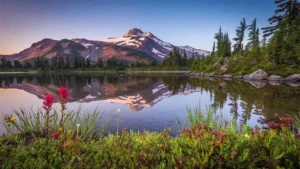
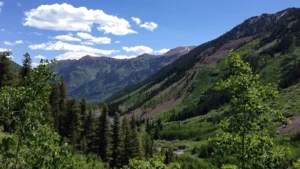
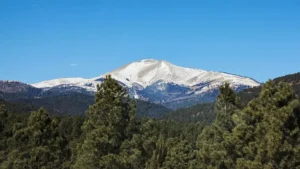
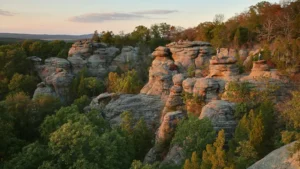
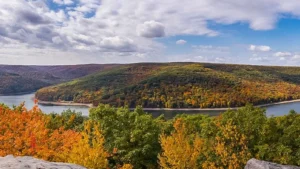
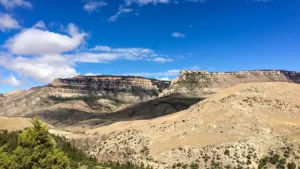

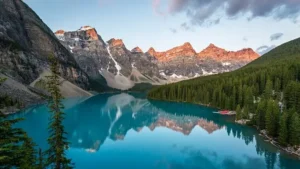
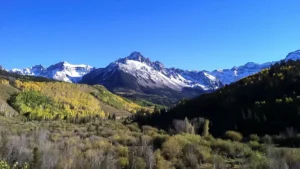
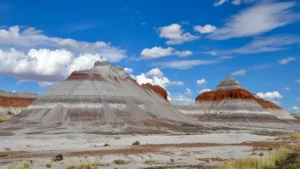
Leave your comment